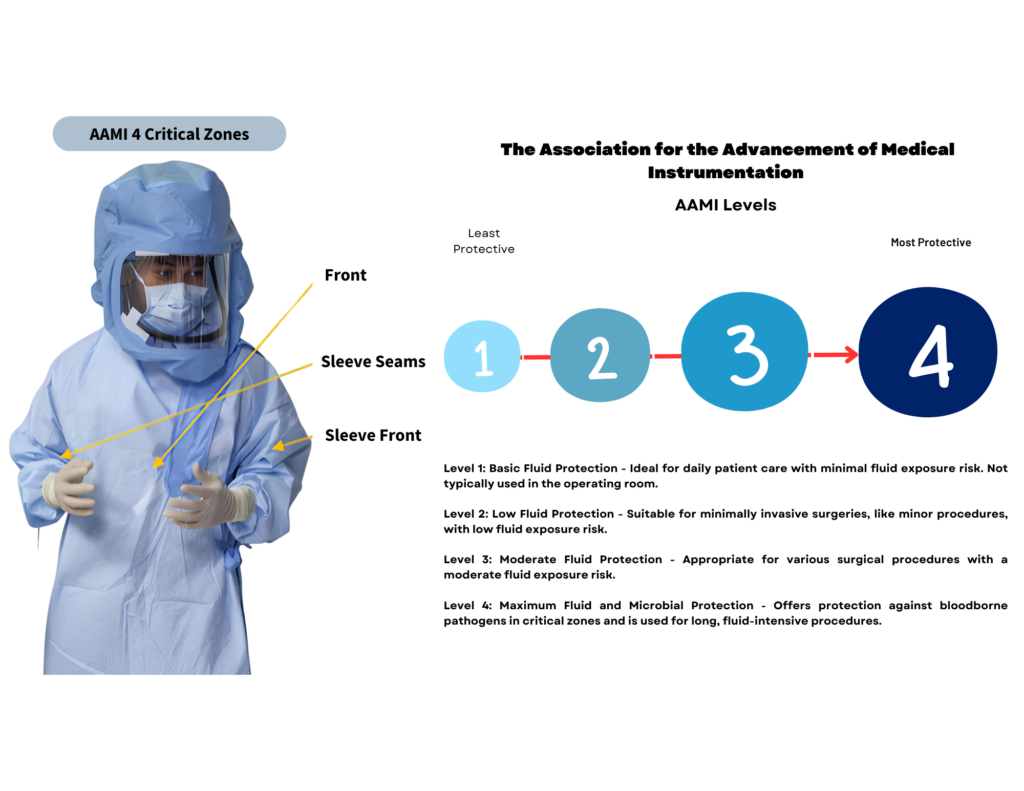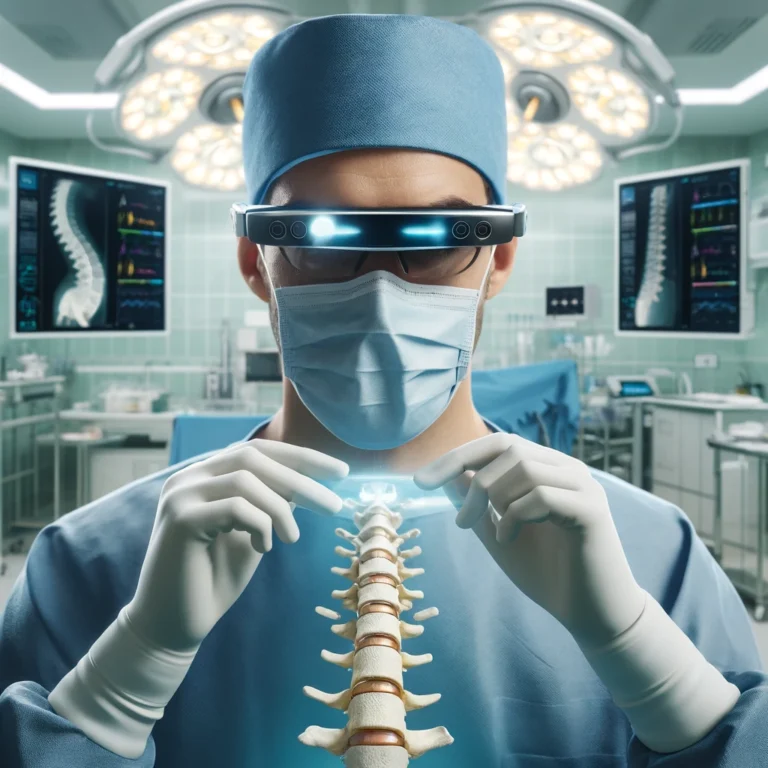For a detailed analysis and data, read the full article here.
Changes in Surgical Dress Reduce Contamination from Sterile Surgical Helmet Systems

Navigating AAMI Levels for Optimal Safety in Surgery
https://www.fda.gov/medical-devices/personal-protective-equipment-infection-control/medical-gowns#g4
In the critical zones of gowns and drapes, where operating room teams come into direct contact with blood and bodily fluids, the “AAMI Standard” (ANSI/AAMI PB70:2012) establishes guidelines for liquid barrier performance.
Level 1: Basic Fluid Protection
- It is ideal for non-surgical situations in hospitals or clinics, such as primary patient care, examinations, and minor non-invasive operations.
- Typical Application: Handling simple patient care activities with little danger of fluid exposure. This includes changing bed linens, washing patients, and managing essential wound care in a non-surgical setting. It is not suggested for any surgical procedures in the operating room.
Level 2: Low Fluid Protection
- Suitable for Minimally invasive surgeries and minor procedures with less danger of fluid splash or exposure.
Examples:
- Dermatological procedures include the removal of skin lesions, minor excisions, and biopsies.
- Orthopedic operations include simple arthroscopy, modest closed fracture reductions, and casting for damaged bones.
- Ophthalmic surgeries include cataract surgery, pterygium excision, and other minor eye procedures.
Level 3: Moderate Fluid Protection
- Appropriate for A wider variety of surgical procedures with moderate fluid exposure risk. Level 3 gowns are more fluid-resistant and ideal for a wide range of general operations.
Examples:
- General surgery includes appendectomies, cholecystectomies, and hernia repairs.
- Obstetrics and Gynecology: Cesarean section, hysterectomy, and other gynecological procedures.
- Orthopedics: Most open fracture reductions, some joint replacements (depending on anticipated fluid exposure), and more sophisticated arthroscopic procedures.
Level 4: Maximum Fluid and Microbial Protection
- Protects the most crucial surgeries with long durations, extensive fluid exposure, or a high risk of infection.
Examples:
- Cardiothoracic surgery includes open-heart surgeries, lung resections, and other procedures that require extensive fluid exposure.
- Trauma and Emergency procedure: Procedures involving severe trauma, extensive blood loss, or when the length and complexity of the procedure raise the danger of fluid exposure.
- Severe orthopedic surgery includes complex joint replacements, spinal fusions, and severe fracture operations that provide a high risk of blood and fluid exposure.
Special Considerations
Use of Bone Cement: Used in operations such as joint replacements, bone cement generates heat and necessitates higher AAMI level gowns.
Use of Power Tools: Power tools are frequently used in orthopedic surgery, which can produce aerosols and spatter, necessitating higher AAMI level gowns.
Sources:
https://www.fda.gov/medical-devices/personal-protective-equipment-infection-control/medical-gowns#g5
ASTM F1671 / F1671M-13, Standard Test Method for Resistance of Materials Used in Protective Clothing to Penetration by Blood-Borne Pathogens Using Phi-X174 Bacteriophage Penetration as a Test System, ASTM International, West Conshohocken, PA, 2013, <https://www.astm.org>
AAMI (2023, January). ANSI/AAMI PB70:2022, Liquid barrier performance and classification of protective apparel and drapes intended for use in health care facilities.
Types of Augmented Reality in Healthcare
Augmented Reality: Advantages, Limitations, and Real-World Applications in Modern Healthcare Practices Types of Augmented Reality in Healthcare Augmented Reality (AR) has firmly begun to take place…
Read More

